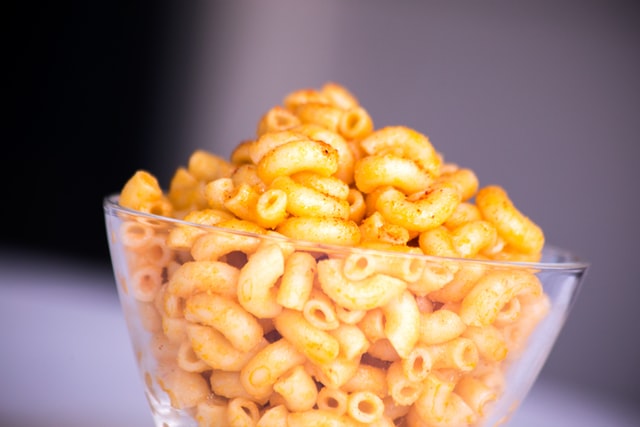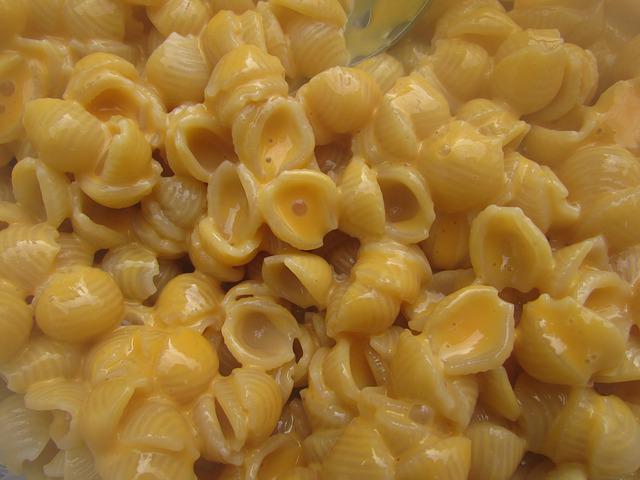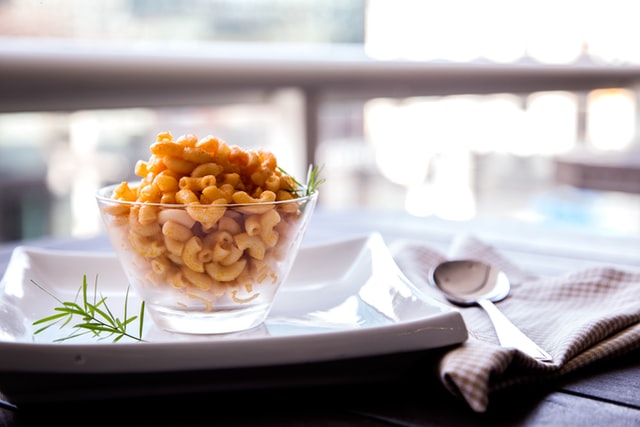
Cheese is considered one of those foods that are high in fat content. However, there is a wide variety of cheeses available to Diabetics that can be eaten without raising blood glucose levels. As with all foods, moderation is the key to glucose control.
Contents
As for comfort food, Macaroni and Cheese is one of those foods that all people seem to enjoy. With such a variety of ways to make Macaroni and Cheese, is there any method that will be best for those with Diabetes?
No person wants to hear that they can no longer eat some of their favourite comfort foods. That will only make them want to eat the wrong foods even more. What a person with diabetes needs to hear is that Macaroni and Cheese can still be consumed, just in strict portion control amounts.
That is unless the Diabetic decides to create a different type of pasta made from vegetables or beans, a gluten-free form of pasta or even fortified pasta. Of course, whole wheat is an outstanding option that tastes great too.
Reducing the amount of sodium that is added, reducing the amount of cheese or using a natural cheese instead of processed will all make a difference in the Macaroni and Cheese. Do not forget to add in some savoury spices or zesty herbs to take the flavour to a whole new level.
Calories

Cheese can be very high in calories and fat. The calorie content can vary per the cheese being eaten. Type 2 diabetes has a strong link to obesity, and as such watching what is eaten, how it is cooked and how much per serving will make a difference.
Saturated Fats

Cheese is high in Saturated fat. When consumed in small quantities, Saturated fat is not harmless. Actually, a small amount of Saturated Fat can be beneficial to the body.
On the opposite spectrum, too much Saturated fat can cause issues such as weight gain, gallbladder problems, high cholesterol and heart disease.
The American Heart Association recommends no more than 5 to 6%, or 120 calories or 13gms of Saturated fat.
People with diabetes can eat one serving of cheese which should contain no more than the recommended amount per day. Some experts do recommend up to 10% of Saturated fats daily.
Being mindful of the amounts of Saturated fats in one’s diet is the best way to be mindful of the amount of fat you are consuming.
As always, the emphasis on a plant-based diet for those with Diabetes will continue to be highly suggested. A plant-based diet is higher in Unsaturated fats which is better for all.
The foods that are most known to be considered risky for high Saturated Fats include Red meats, cheese, sausage, bacon and full-fat dairy products.
Sodium

Sodium is known to elevate blood pressure which can cause worsening symptoms of the cardiovascular nature. Cheese is known to be high in sodium, especially processed cheeses. Fresh cheeses have a better sodium level than processed. As a diabetic, choose fresh cheese over-processed food in order to maintain lower sodium levels.
Affecting Blood Glucose

Cheese is known to have a low glycemic count. This means that cheese releases the glucose slowly so it will not cause a sudden spike in blood glucose levels. Cheese is usually eaten in conjunction with other foods, some of those partner foods may cause spikes or drops in the blood sugar levels.
Carbohydrates, which are found in many of the complementary foods that are eaten with cheese can directly affect blood sugar levels. However, when they are paired with an appropriate level of cheese, it can help maintain that feeling of fullness that people seek to prevent overeating.
The portion sizes of the foods that are eaten need to be taken into consideration, along with the cheese in order to manage the sugar content and saturated fat intake.
Best and Worst Cheeses

Those with diabetes, these people should avoid processed cheeses altogether. This includes single-sliced cheeses also. Spray cheeses should also be avoided due to the sodium levels and Saturated fats.
There may also be other ingredients that have a negative reaction to those with diabetes.
The high salt cheeses include the following, there are possibly more:
- Feta
- Imported bleu
- Edam
- Halloumi
- The lower-sodium varieties of cheese include:
- Low Sodium Cottage cheese
- Emmental
- Mozzarella
- Cream Cheese
- Wensleydale
Most cheeses will all have a similar amount of fat, however, there are some that contain more. American cheese, as well as Monterey Jack, have a slightly higher content of saturated fat. Provolone and Mozzarella have slightly lower amounts of saturated fats.
It may be a good idea for Diabetics to start looking at the Nutrition labels of the foods before they purchase.
Some cheeses may contain higher levels of protein or calcium and other minerals, this would be particularly beneficial for a diabetic.
Interesting Nutrition Facts

One ounce of Provolone cheese contains the full recommended daily requirement of calcium.
Neufchatel tastes quite similar to Cream Cheese, however, it has a lower fat content. The fat content in Neufchatel is ⅓ that of Cream cheese.
Parmesan cheese is higher in protein than some other cheeses, but with a lower calorie count.
Fermented cheeses such as Cottage cheese, feta cheese, Ricotta cheese Gouda and Cheddar actually provide a number of probiotics.
Probiotics are healthy bacteria that may help improve general well-being and also reduce the risk of cardiovascular disease.
Diabetic people are prone to yeast infections and probiotics help to fight those infections. Probiotics also help to improve the health of your gut, naturally.
Benefits

Based on much research, cheese is an excellent source of protein for those on a vegetarian diet, who also have diabetes.
The protein in some cheese will help a person to feel full longer, thus avoiding intermittent snacking throughout the day. Feeling fuller will help prevent binge-eating unhealthy foods.
Ways to Make Macaroni and Cheese Healthier

As stated, macaroni and cheese are often considered comfort food. Most people enjoy the feelings that comfort foods give them when eating. However, for Diabetics, the manner in which these comfort foods are made could make all the difference for them. Preparing your own homemade Macaroni and cheese versus the prepackaged product is the best way to start.
When making the macaroni and cheese homemade, choose vegetable pasta or wheat pasta, this will automatically increase the benefits and lower the risks just a little. Avoid using salt when boiling the pasta, it is an unnecessary ingredient.
There is plenty of pasta that is made using vegetables, such as spinach, squash and a wide variety of others. Secondly, always look for low-fat content cheeses that are natural. Read the labels to find the cheeses that will work, you can easily shred the cheese yourself by purchasing it in one-pound blocks. This will also give you control over how much cheese you use.
Herbs and seasonings can all make a huge difference in the way that foods taste. Just adding garlic to your macaroni and cheese will take it to another whole level. Imagine what chilli powder or Italian seasoning will do to a fresh bowl of Macaroni and cheese.
Adding in some healthy vegetables can make a big difference also. If you have cut back on sodium and salt, replace that with another flavour. Habanero peppers, Red bell Pepper or simply sliced green onions will add so much flavour with very little work and no effect on the blood glucose levels. Before you take the first bite, drizzle a bit of hot sauce on the Macaroni and cheese and enjoy.
With such a variety of cheeses available, you can virtually make a new flavour of Macaroni and Cheese weekly, for the whole year. Try a different flavour of cheese, freshly shredded such as Pepper Jack, Gouda, or even Muenster. Just be sure to read the labels first and choose accordingly for your healthy Diabetic lifestyle.
There are always healthier options for pasta for diabetics, these are actually healthy for all of us. You could use gluten-free, whole wheat or even fortified pasta. Again, it is not too difficult to make your own pasta and you may discover a truly delightful flavour. You could experiment with homemade pasta and add cheese directly to the pasta mix, this would be less cheese in the entire dish, leaving you open to any number of options for other additions.
Conclusion

Having diabetes does not mean that you have to give up entirely on comfort foods such as Macaroni and Cheese. It could actually be fun to make a whole new type of pasta that would be healthier for you and also help to eliminate the added cheese, sodium, flour or other carbohydrates. Be open to experimentation, since it means your health. This gives you an opportunity to create new flavours, new combinations and ultimately entirely new foods.
To reiterate, portion control is the biggest factor that one needs to watch for. Reading the nutrition labels to ensure that you have a natural cheese, with lower sodium, and lower saturated fat content will also help Diabetics to eat healthier, maintain a healthy weight and more importantly avoid the dreaded blood glucose spikes that can happen when too much wrong food is eaten.





